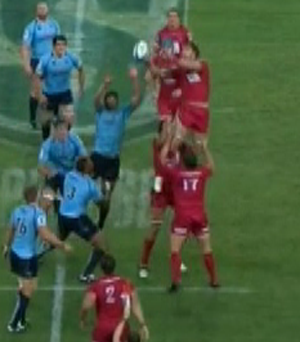mark_s
Chilla Wilson (44)
Thanks Scott, thats excellent analysis. It does seem like the tahs line up was back further than needed which, combined with an inccurate reds lift, distorts the viewing for a one eyed tahs fan.
Only other thing I noted was that Higgenbottom got a big jump on Mumm and I think that was just as much a contributor to the penalty as anything else as Mumm was trying to "cut a corner" to catch up which meant his was jumping at a much bigger angle.
I will try and find the other lineout from the first half on tape to satsify my own curiosity, but its probably the same.
Only other thing I noted was that Higgenbottom got a big jump on Mumm and I think that was just as much a contributor to the penalty as anything else as Mumm was trying to "cut a corner" to catch up which meant his was jumping at a much bigger angle.
I will try and find the other lineout from the first half on tape to satsify my own curiosity, but its probably the same.

